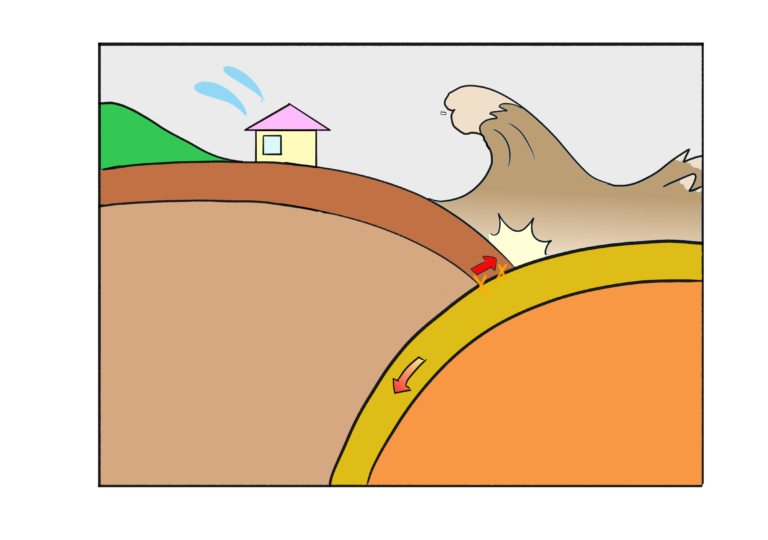
In an earthquake that occurs at a plate boundary, the top of the land plate is jacked up, causing the seawater directly above to rise and sink – and this movement of the seawater forms a tsunami.
Tsunamis are caused the simultaneous movement of seawater from the sea floor to the sea surface, and the impact and devastation of the massive amount of water that floods coastal areas can be tremendous.
Tsunamis not only occur in the sea but can also occur in the mountains when a large mudslide flows into a lake or pond – or dam, setting off huge waves of water.